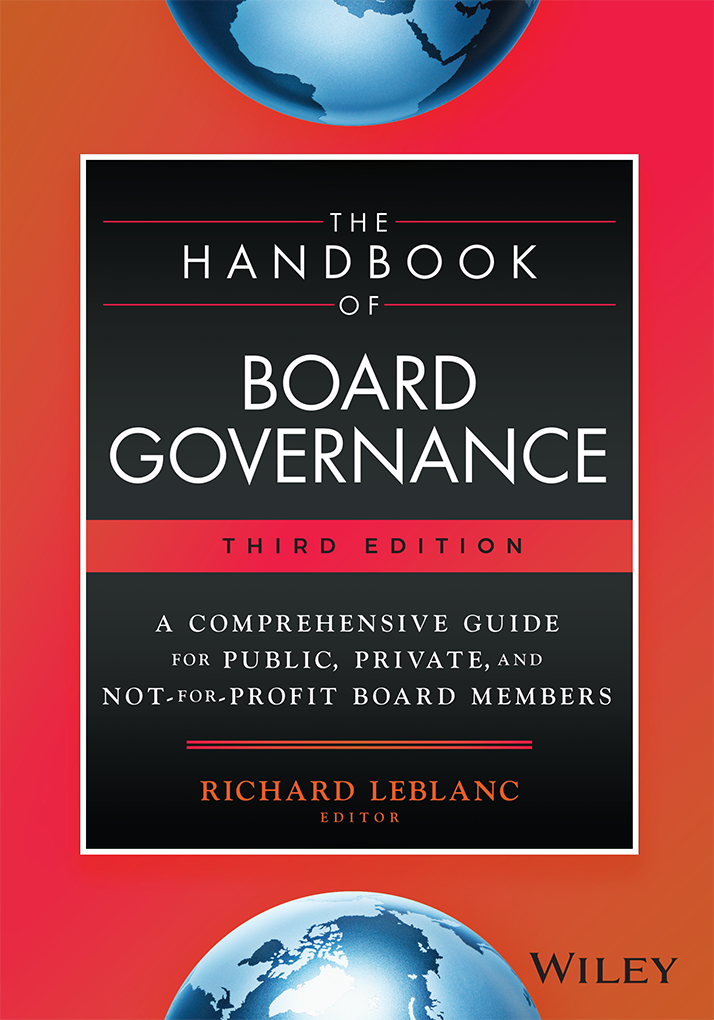The former Prime Minister whispered in my ear before the board meeting of the bank, “Watch the way I chair this meeting, Richard.” Seeing a meeting chaired almost perfectly is a rarity so I paid attention and was not disappointed. Contrast this to another bank board meeting, where the CEO pounded the table, berating the chair in front of directors, and the chair said very little during the meeting. Both chairs are non-executive, supposedly independent, yet these meetings played out very differently.
I have observed, interviewed and assessed chairs operating in many industries, both inside and outside of Canada, including agriculture, airline, automobile, banking, credit union, crown, forestry, health care, insurance, mining, oil and gas, not-for-profit, pharmaceutical, steel and technology sectors.
Don’t assume all chairs are equal or a chair is effective given an external profile. Chair performance varies widely. Ask directors.
What separates the good from bad chairs?
How do you really know if a chair is effective, from outside the boardroom? Here are some tips.
Independence: Is the chair really independent? Watch for the CEO trying to capture the chair through perks, office support, vacations, jobs for family members, donations to charities, social relations – anything below the radar screen and hard to detect. In the words of one director during an assessment, “The Chair is owned by the CEO.” He was right. Chairs are very candid with me on how influence happens.
Chair Criteria: Integrity, agendas, coaching and development, commitment, information flow, financial literacy, fit with the CEO (including chemistry but also being tough-minded, rigorous and disciplined), holding people accountable, chairing of meetings, consensus-building, and building of healthy dynamics are all attributes and skills of successful chairs.
Chair Performance: I have observed and have data confirming chairs or lead directors that are ineffective and beholden to management or a significant shareholder despite what external disclosures are. Be skeptical.
Chair Selection: The chair should be selected from and by independent directors. Each director should offer confidential views and a formal vote should be taken. A committee should have chair succession planning in its mandate. All directors who participate in chair recommendation to the board should be uninterested in the role. The CEO should have no influence whatsoever, although he or she should be appropriately consulted given the importance of Chair-CEO fit.
Chair Tenure: Have a three-year appointment, with the option of one further term only if there is clear consensus no one else is better.
Chair Compensation: Watch for the quantum of total compensation, as it gives rise to reasonable perception of independence. A board chair is a part-time position and should be paid as such. I remember when a CEO said to me in the board meeting that he needed to get paid a lot so he wouldn’t “get nervous” and the lead director – also paid a lot – chuckled and agreed.
Chair Evaluation: Chairs should be assessed by each director and reporting management annually. Debriefing should occur between the board chair and the governance/nominating committee chair. Each director should be able to make use of this person/position if he or she has any performance-related concerns with the Chair.
Focusing the Board on Value: Last, but not least, the most important role of the Chair is to ensure the maximization of company performance and shareholder value. Research in Motion and other companies take note. When there is a value deficit, independent Chairs must have the courage to act. The Chair must have value creation skills, experience, leadership and a proper mindset that is focused like a laser on this end and the board’s responsibility to maximize performance and value. Absent the right individual in the role, other qualifications are moot. Substance over form should prevail.
The above points apply equally to Lead Directors in the American context, but because Lead Directors don’t chair full board meetings, it is critical that the attributes and selection of the person – particularly independence, influence and impact – be carefully thought through.
Next to the selection of CEO, the selection of board chair is probably the most important decision a board makes. If a board is ineffective, it is likely the chair is also ineffective and should be replaced. The chair has the single greatest impact on board effectiveness.
Posted by Richard Leblanc on Jan 17, 2012 at 12:43 am in Board and Committee Leadership |












